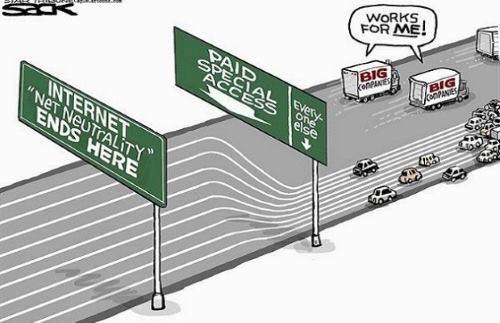“In true internet fashion, every site is participating in its own way,” Evan Greer, campaign director of Fight for the Future, told NBC News. “Most are using our widgets that allow visitors to easily submit comments to the FCC and Congress without ever leaving the page that they’re on. Many are getting creative and writing their own code or displaying their own banners in support of Net Neutrality that point to action tools.”
That FCC Chairman Ajit Pai made rolling back Net Neutrality regulations one of his first priorities is a testament to the Trump Administration’s ongoing efforts to symbolically erase the Obama Administration’s legislative and regulatory policies. Pai seemed unmoved by the fact more than four million Americans sent messages to the FCC in 2015 in support of Net Neutrality. At that time, that was the largest number of comments ever received by the FCC on any issue.

This poll, sponsored by cable industry trade group NCTA, found 61% of Americans in favor of Net Neutrality.
![]() Pai is likely to feel safe ignoring today’s protest, as long as he is backed by the Republican majority on the Commission, President Trump, and a Republican Congress. He’s also smugly content about his position.
Pai is likely to feel safe ignoring today’s protest, as long as he is backed by the Republican majority on the Commission, President Trump, and a Republican Congress. He’s also smugly content about his position.
“It’s basic economics. The more heavily you regulate something, the less of it you’re likely to get,” he said in a speech at the Newseum in Washington in April.
But Pai ignores the fact telecom companies have used their deregulated duopoly status to raise internet prices almost unfettered, and several companies have ensured their customers will get less internet usage with the introduction of data caps. Monetizing video traffic is just another way for ISPs to raise profits while reducing the internet experience for its customers.
“Consumers hate buffering and slow-loading and will abandon videos and services if they’re not getting a good viewing experience,” said Michael Chea, general counsel for Vimeo, a video-sharing site dwarfed by YouTube. “[Companies] can throttle some websites over others, favor their own content. This is another thing that will reduce choice, increase costs, and reduce innovation.”


 Subscribe
Subscribe
